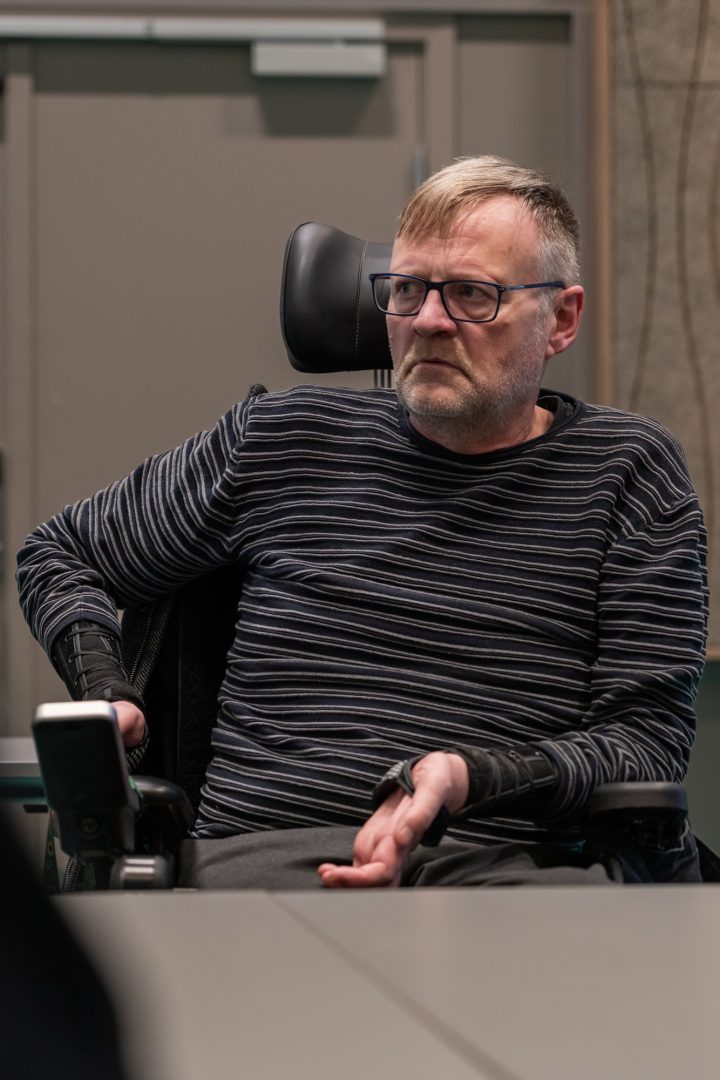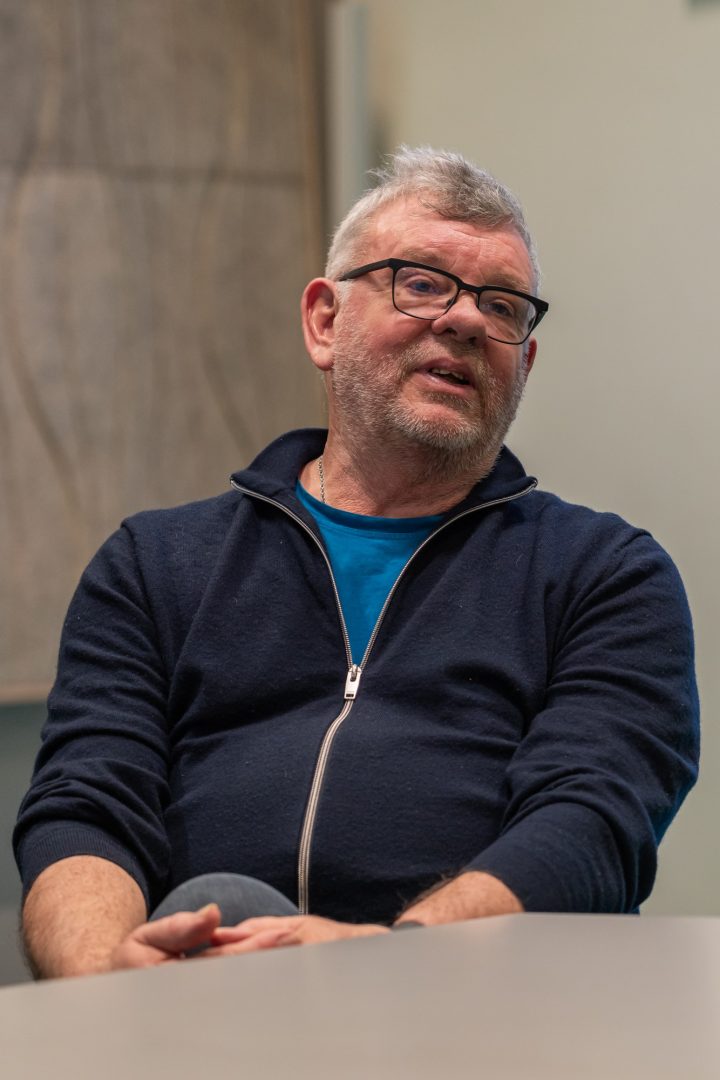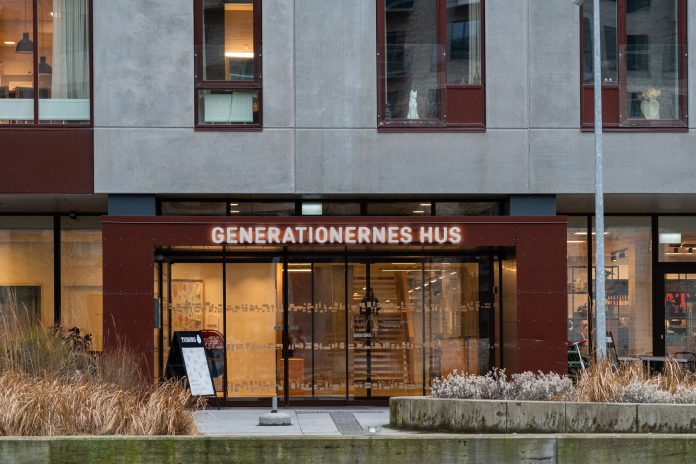At Generations House (Generationernes Hus) in Aarhus, Denmark, about a three-hour drive northwest of Copenhagen, the oldest resident is 100 years old, and the youngest is just three months.
The experimental housing project contains a mix of residences across the building’s four towers: family homes, senior living, nursing care and youth and refugee housing. It even has a daycare centre for 150 children aged six and under and 36 terraces open to all residents to enjoy the outdoors.
The home is a part of an eight-storey multi-building project designed to bring multiple generations together to live under one roof.
Per Spleth, a 59-year-old resident, has been living at Generations House for one and a half years.

Spleth has ALS, a terminal neurodegenerative disease. He moved to the house after his condition worsened.
“I’m missing the muscle in my legs, so I can’t take the stairs anymore,” he says. “I saw this house and thought it would be a good thing for me.”
He says he enjoys living at Generations House as an alternative to a nursing home as he “couldn’t see [himself] living with people over 80 years old.”
Spleth also prefers Generations House as it allows him to keep most of his independence, and self-determination is at the forefront of his care.
It is important to Spleth that he has a choice in his care, which he has by living here. He can ask a personal support worker for help to get him washed and dressed every day, but he can otherwise do everything on his own.
Generations House’s core values place an emphasis on community and inclusion, and Spleth’s experience reflects this.
Benny and Herman Bjerregaard, Spleth’s close friends, have lived at Generations House for five months.


The couple moved to the complex to support their friend as Herman’s own health deteriorated. Living at Generations House means Benny has his friend and partner there today, but will not have to leave their home or friends when both men are gone. “My husband is also sick, and I can see myself in here if I’m alone one day,” says Benny.
Both Spleth and Herman wear a sunflower lanyard around their necks, representing and bringing awareness to invisible disabilities.
The trio meet regularly in the building’s in-house café and have integrated themselves seamlessly into the welcoming community of 400 residents.
Spleth and Herman volunteer weekly at the building’s reception where they answer questions the public may have about Generations House.
Reflecting the goal of Generations House, the three residents interact daily with people outside their own age group.
They light up when speaking about the children that attend the centre’s daycare, who sing to elderly residents every Tuesday.
Beyond housing multi-generational residents, Generations House is also home to eighteen rehabilitating soldiers from Ukraine.
Spleth and the Bjerregaards are members of the house’s choir, where they learned the Ukrainian national anthem in honour of the refugees.
Although Generations House is an innovative project that prides itself on the inclusive and diverse community it has created, the home has faced challenges that come with experimental endeavours.
In February, an article was published outlining that some health standards were not being met in the house’s nursing home facilities.
The Danish Patient Safety Agency reported a “lack of systematicity and structure in record keeping” related to patient medications.
Kristian Dall, manager of Generations House, says perhaps they went “too fast” opening so many nursing home apartments.
This is the second time the agency had failed the house during an inspection.
Dall says Generations House is being evaluated by an external consultant to see what can be changed or adjusted.
Another challenge has been integrating youth into the community, with Dall noting a lack of engagement.
He says the young people keep to themselves and rarely interact with the community.
“They live there for a short period of time and don’t interact physically,” he says, but it is something he and his staff continue to work on.
Despite the challenges they face, Generations House remains a “community.”
“Our biggest success is bringing elderly people together,” says Dall.
As well as being a safe space for older generations, Generations House raises a community of inclusive young people. Dall says, “Children experience from early in life that people can be different.”
Spleth and his friends agree.
“I only see the positives,” says Spleth.
He says he enjoys living here in his situation.
“I would rather not be sick,” says the former agricultural consultant, “but I’m glad to be living here.”
This story was reported as part of Durham College’s Faculty-led Classroom Abroad, which explored elder care innovations in Denmark.




